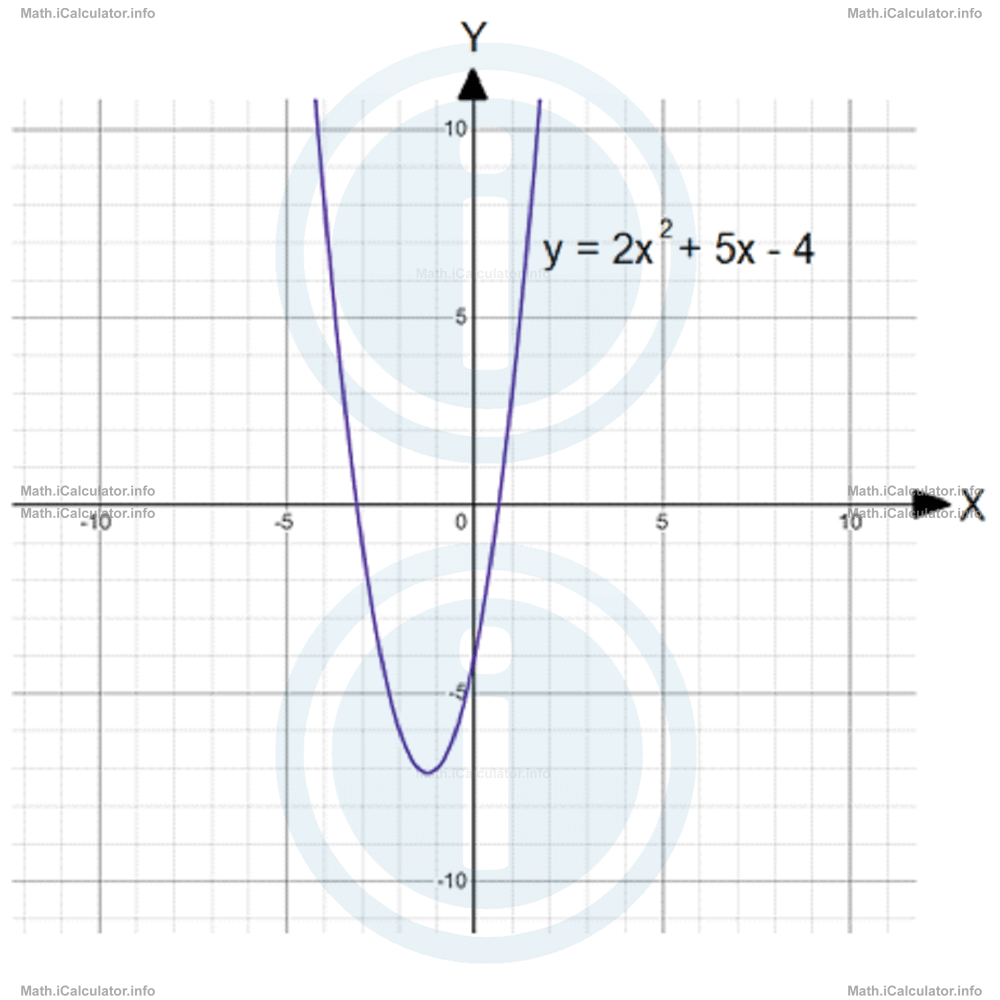Menu
Math Lesson 15.1.1 - Recalling Quadratic Equations
Please provide a rating, it takes seconds and helps us to keep this resource free for all to use
Welcome to our Math lesson on Recalling Quadratic Equations, this is the first lesson of our suite of math lessons covering the topic of Quadratic Graphs Part One, you can find links to the other lessons within this tutorial and access additional Math learning resources below this lesson.
Recalling Quadratic Equations
In previous chapters we explained that quadratics are equations where the highest power of the dependent variable is 2.
A quadratic equation with one variable - as the name suggests - is a type of equation that contains a single variable raised to a maximum power of 2. The variables in the first power are also present in the same equation in many cases. We usually express the variable by the letter x but other letters can also be used.
A quadratic equation with two variables is an equation where the independent variable (usually x) is at the second power at maximum, while the dependent variable (usually y) is always written to the first power.
Second-order equations with two variables are also known as quadratic functions. They are called "quadratic" because "quadratum" is the Latin word for "square" and since the independent variable is raised in the square, we call these equations quadratic.
The general form of a quadratic equation with two variables is
where a and b are coefficients (numbers preceding variables) while c is a constant (free number, not followed by a variable).
If the dependent variable is taken as zero, we obtain the corresponding quadratic equation with one variable
Equations of this type are solved by checking the sign of the discriminant Δ first. The discriminant is an expression of the type
Thus, if the discriminant is positive (Δ > 0), the quadratic equation has two distinct solutions (we call them "roots"):
x1 = -b - √∆/2a and x2 = -b + √∆/2a
If the discriminant is zero, the quadratic equation has a single solution (root) since the part inside the square root becomes zero (sometimes we say 'the equation has two equal roots'):
This is because
x1 = -b - √0/2a and x2 = -b + √0/2a
and we know that √0 = 0, so that part disappears from the formula.
When the discriminant is negative the quadratic equation has no solution. This is because the square root of negative numbers does not exist in the set of real numbers.
Last, the shape of quadratic graphs is a parabola. This is because, in geometry, the equation of a parabola has the basic form y = x2. All the other elements added in the formula, such as any coefficient a preceding the variable x, any bx term or any constant c, simply make the parabola shift, stretch, compress or flip vertically in respect to the basic form y = x2.
The figure below shows an example of the graph of a quadratic equation (y = 2x2 + 5x - 4). It is nothing more than a quadratic equation with two variables shown on a coordinates system.

You have reached the end of Math lesson 15.1.1 Recalling Quadratic Equations. There are 6 lessons in this physics tutorial covering Quadratic Graphs Part One, you can access all the lessons from this tutorial below.
More Quadratic Graphs Part One Lessons and Learning Resources
Whats next?
Enjoy the "Recalling Quadratic Equations" math lesson? People who liked the "Quadratic Graphs Part One lesson found the following resources useful:
- Recap Feedback. Helps other - Leave a rating for this recap (see below)
- Types of Graphs Math tutorial: Quadratic Graphs Part One. Read the Quadratic Graphs Part One math tutorial and build your math knowledge of Types of Graphs
- Types of Graphs Revision Notes: Quadratic Graphs Part One. Print the notes so you can revise the key points covered in the math tutorial for Quadratic Graphs Part One
- Types of Graphs Practice Questions: Quadratic Graphs Part One. Test and improve your knowledge of Quadratic Graphs Part One with example questins and answers
- Check your calculations for Types of Graphs questions with our excellent Types of Graphs calculators which contain full equations and calculations clearly displayed line by line. See the Types of Graphs Calculators by iCalculator™ below.
- Continuing learning types of graphs - read our next math tutorial: Quadratic Graphs Part Two
Help others Learning Math just like you
Please provide a rating, it takes seconds and helps us to keep this resource free for all to use
We hope you found this Math tutorial "Quadratic Graphs Part One" useful. If you did it would be great if you could spare the time to rate this math tutorial (simply click on the number of stars that match your assessment of this math learning aide) and/or share on social media, this helps us identify popular tutorials and calculators and expand our free learning resources to support our users around the world have free access to expand their knowledge of math and other disciplines.